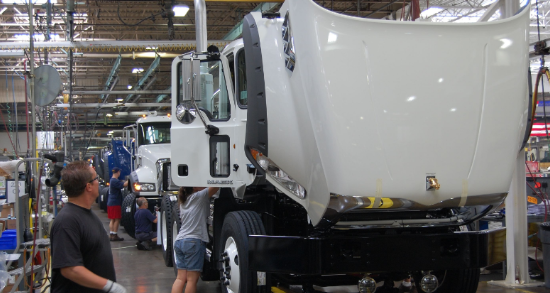Commercial Vehicle Forecasts Upgraded for 2020

ACT Research reports freight rates boosted by a driver shortfall that was created by massive layoffs and extended unemployment benefits
According to ACT’s latest release of the North American Commercial Vehicle OUTLOOK, forecasts for 2020 were marked up across the board in July. The report cites the uptick as a result of the impact of nearly $6 trillion in stimulus to date, better-than-expected economic activity in June, freight rates boosted by a driver shortfall that was created by massive layoffs and extended unemployment benefits, and preliminary June metrics that were well above trend.
COVID-19 continues to impact the CV industry, as well as the US and global economies, but we do not believe state-level closures are likely from here,” said Kenny Vieth, ACT’s President and Senior Analyst. He elaborated, “That said, the raging case counts in Sunbelt states raise the risk of supply-chain disruptions, if any of the heavily-impacted states are shuttered for several weeks, as too much July 4th weekend fun is expected to drive a case surge into the end of the month.” Vieth added, “A vaccine is seen as the key to unlocking a more broad-based recovery, as the simplest human interactions will no longer have to be weighed and justified.”
Regarding the US transportation industry specifically, he continued, “Even as the economy works to regain its footing post-COVID and pre-vaccine, freight markets should be somewhat less impacted because, while we can choose not to go to restaurants, not eating is not an option. Most freight is related to society’s most basic needs: food, shelter, clothes, transportation.”
Regarding NA commercial vehicle demand, Vieth commented, “Combined with the OEMs and their supply base pushing hard to restore material and assembly flows, underlying economics do not appear to be as punitive as initially estimated. Additionally, spot freight rates, sitting at the intersection of equipment supply and freight demand, are the leading indicator of heavy CV demand cycles. Because of these factors, we’re seeing stronger and sooner production increases.”
Category: Featured, General Update, Management, News, Vehicles










